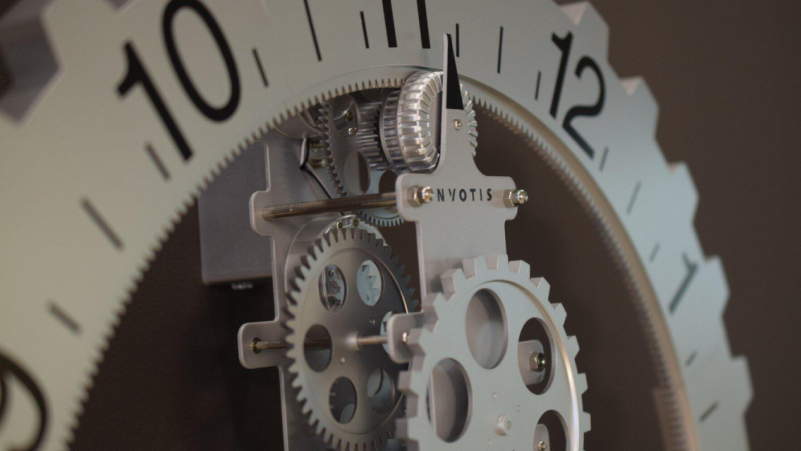Ever wonder how a clock keeps ticking day and night without stopping?
There are small parts inside that all work together to move the hands around. If you’re someone who enjoys building or fixing things, learning how these parts work can be fun.
Each piece has a job, and knowing what they do makes building a clock easier. Keep reading to learn what you need to get started.
Clock Hands
Clock hands are the parts that show the time on the face of a clock. You see them move every minute and hour throughout the day. They need to be the right size so they can turn without hitting anything.
If they are too heavy, they might not move well or stop working. Many people choose different styles to match their clock’s look.
You can find short, long, thin, or thick ones in different colors. Picking the right hands can make your clock look neat and easy to read.
Gear Train
The gear train helps all the parts inside a clock move in the right way. Each gear turns another gear, so the hands move at the right speed.
If one gear slips or gets stuck, the whole clock can stop working. That’s why every gear needs to fit well and be in the right place. When building a clock, it’s smart to check the size of each gear.
You can buy wholesale clock movements here if you want all the gears and parts ready to use. It helps save time when starting a new project.
Main Spring
The main spring gives the power that makes a clock move and keep time. When you wind it, the spring gets tight and starts to unwind slowly.
As it unwinds, it pushes the gears and keeps the hands moving steadily. You have to make sure it’s wound the right way every time. If it’s too loose or too tight, the clock may stop working.
It’s a small part, but it plays a big role in the clock. A good spring helps the whole clock stay on track all day.
Escapement
The escapement helps control how fast the gears and hands can move. It ticks at a steady rate and keeps everything working on time.
Without it, the hands might spin too fast or not move at all. Each tick of the escapement gives a small push to the gears. It works best when it’s clean and not worn out or bent.
A smooth-running escapement helps your clock stay accurate through the day. It’s a fun part to watch once the clock starts moving.
Pendulum
The pendulum swings back and forth to help the clock keep time. Each swing makes the gears move one step at a time.
If the swing is off, the whole clock can run too fast or too slow. The length of the pendulum matters for how it ticks. Longer ones swing slower while shorter ones tick faster.
You can adjust it a little if the time is off. Once it’s set right, the pendulum helps the clock stay steady every day.
Know More About These Clock Movement Components
Making your very own clock can be a fun project if you take your time. There’s a lot to learn, but each step can be exciting. You don’t need to rush, and it’s okay to ask for help.
Once you see it working, you’ll feel proud. Keep learning and building, and you’ll get even better with time.
Are you looking for other helpful content? If so, stay with us and continue reading for more.
Visit my site for more details.
